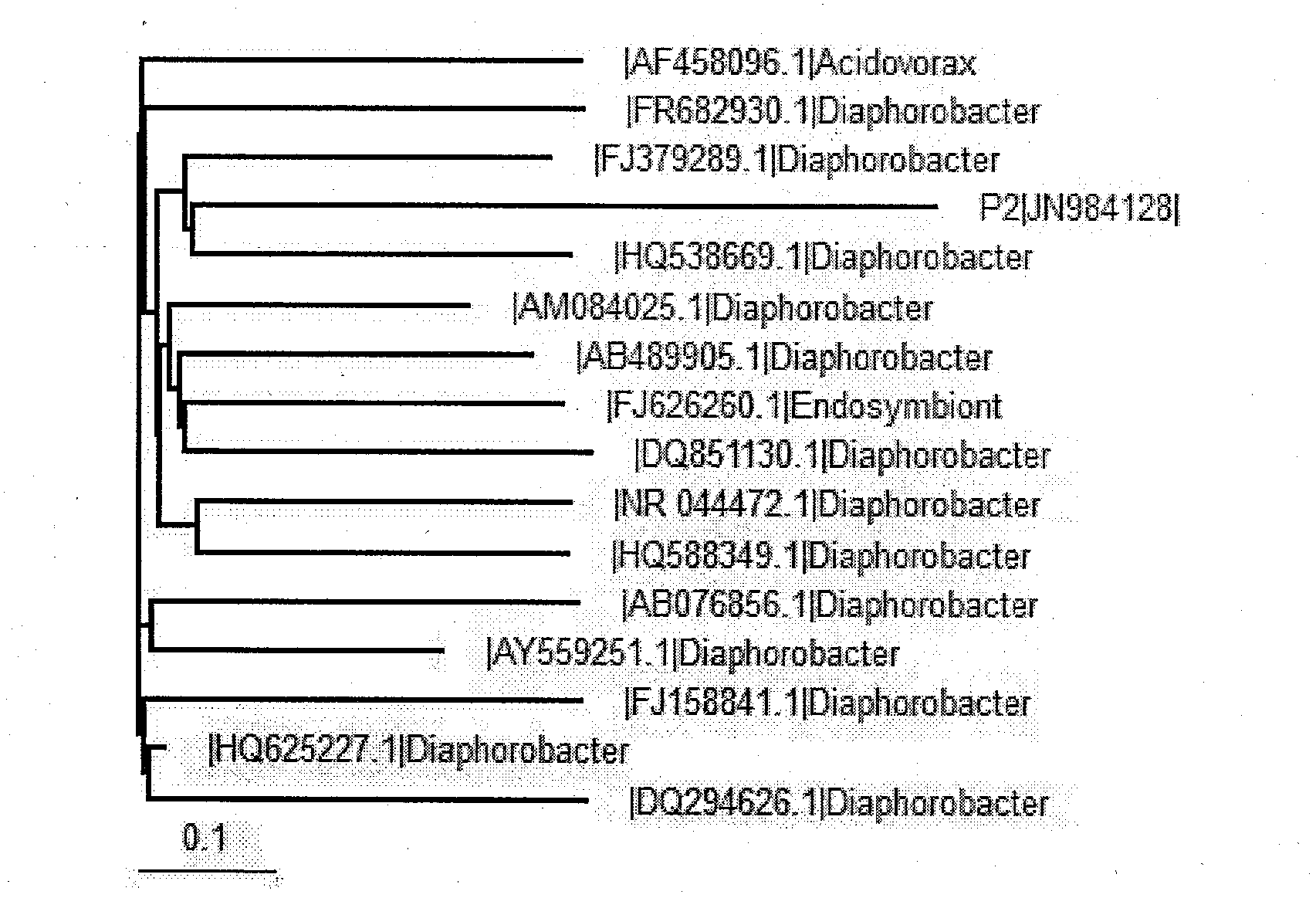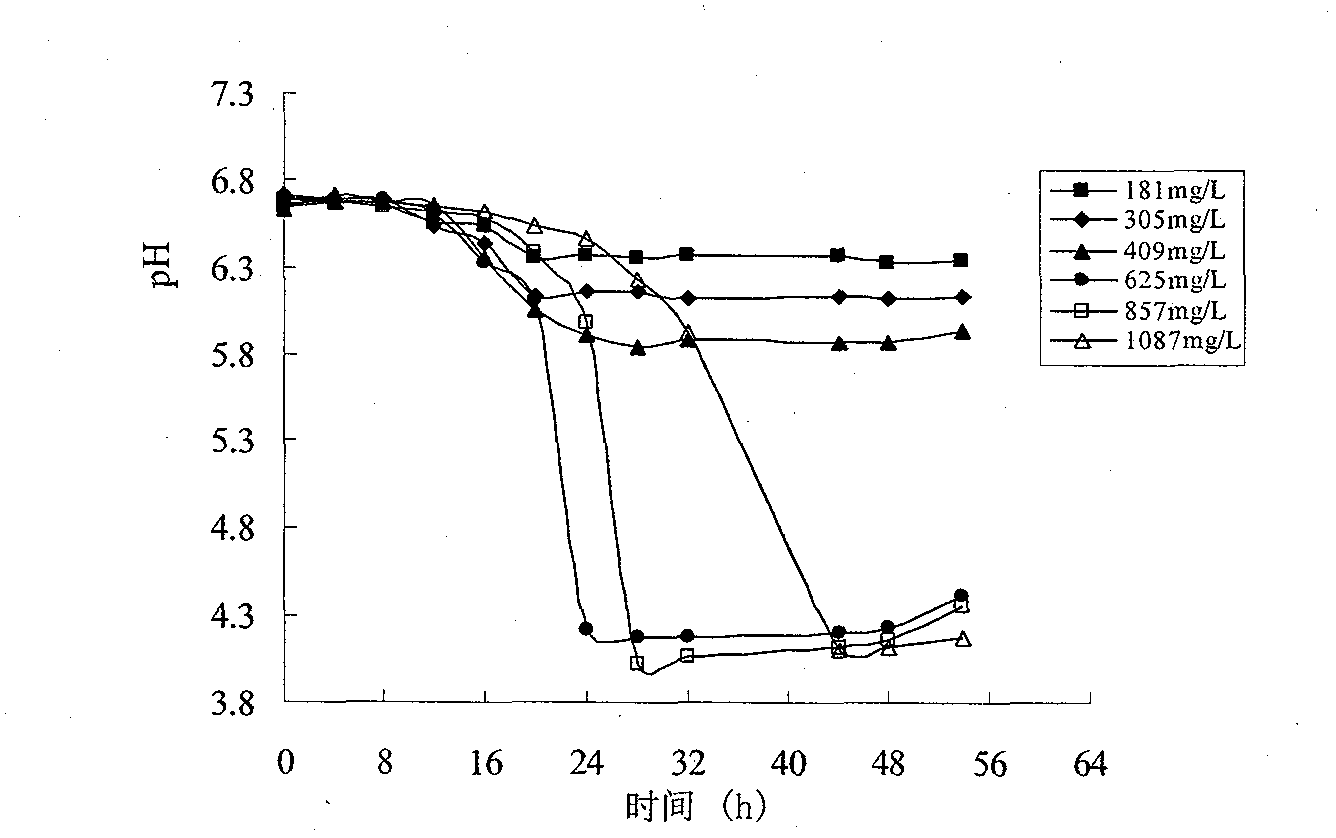Application of Diaphorobacter bacterium in phenol removal of coking wastewater
A strain and phenol-reducing technology, applied in bacteria, water pollutants, chemical instruments and methods, etc., can solve the problems of different sources of phenol-reducing strains, different adaptability of wastewater, and inhibition of biochemical degradation of phenols.
- Summary
- Abstract
- Description
- Claims
- Application Information
AI Technical Summary
Problems solved by technology
Method used
Image
Examples
Embodiment Construction
[0015] Collect activated sludge samples from the secondary sedimentation tank of the coking plant, put them into sterile sealed plastic pots, and bring them back to the laboratory for enrichment and screening.
[0016] 2. Medium formula required for cultivation and isolation identification
[0017] Beef extract peptone enrichment medium: peptone 10g, beef extract 3g, sodium chloride 5g, deionized water 1000ml, pH 7.0-7.2, phenol (according to requirement), solid medium is to add 15- 20g agar.
[0018] Specific formula of inorganic salt liquid medium: KH 2 PO 4 0.5g, NH 4 NO 3 1.0g, MgSO 4 0.2g, CaCl 2 0.2g, FeSO 4 ·7H 2 O 0.01g, MnSO 4 ·H 2 O 0.01g, phenol (according to the need to add), add distilled water to 1L, the solid medium is to add 15 ~ 20g agar to this medium.
[0019] The NaOH concentration used to adjust the pH value is 2 mol / L, and the HCl concentration is 0.5 mol / L.
[0020] 3. Screening, isolation and identification of phenol-degrading strains
...
PUM
 Login to View More
Login to View More Abstract
Description
Claims
Application Information
 Login to View More
Login to View More - R&D
- Intellectual Property
- Life Sciences
- Materials
- Tech Scout
- Unparalleled Data Quality
- Higher Quality Content
- 60% Fewer Hallucinations
Browse by: Latest US Patents, China's latest patents, Technical Efficacy Thesaurus, Application Domain, Technology Topic, Popular Technical Reports.
© 2025 PatSnap. All rights reserved.Legal|Privacy policy|Modern Slavery Act Transparency Statement|Sitemap|About US| Contact US: help@patsnap.com



